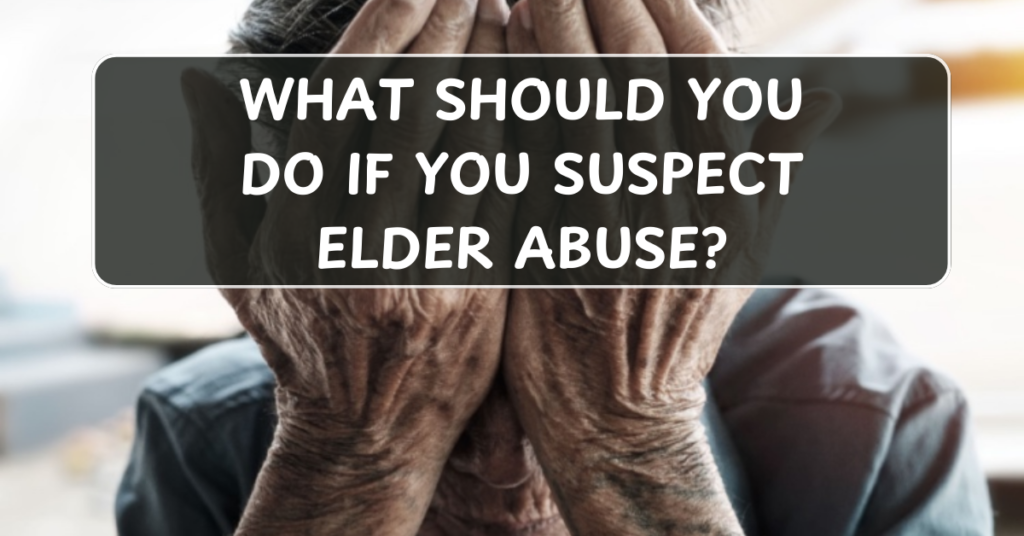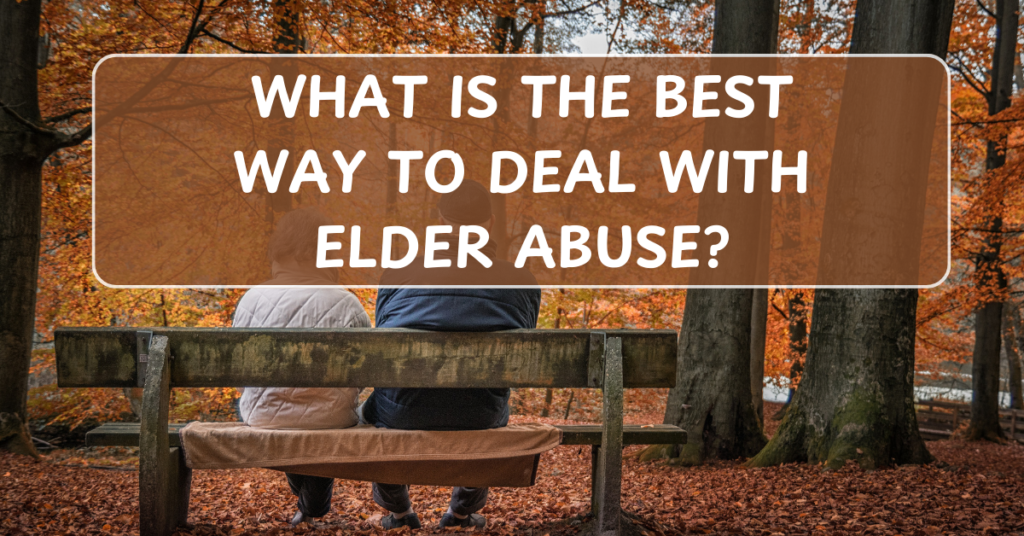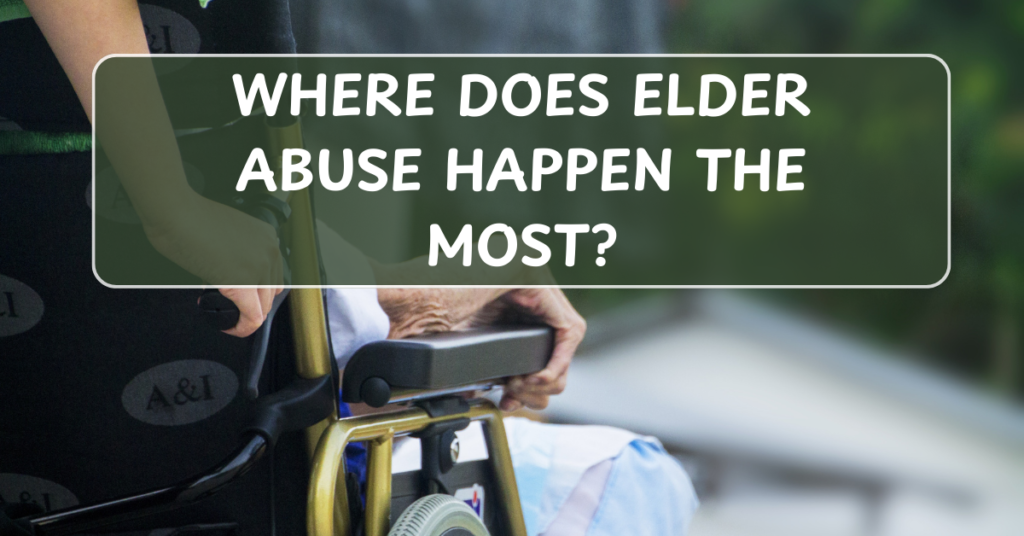
Elder abuse is a serious issue that can occur in various forms, including physical, emotional, financial, and neglect. If you suspect elder abuse, it’s essential to take immediate action to protect the elderly individual involved. Whether you’re a family member, caregiver, neighbor, or concerned community member, knowing the steps to take can make all the difference in preventing further harm. Here’s what you should do if you suspect elder abuse.
1. Stay Calm and Gather Information
Before jumping to conclusions, take a step back and assess the situation. While it’s important to be vigilant, it’s equally important to avoid making assumptions without clear evidence. Start by gathering as much information as possible to confirm your suspicions.
- Observe Physical Signs: Look for bruises, cuts, burns, or signs of physical restraint. Keep an eye out for unexplained injuries or injuries that don’t match the person’s explanation.
- Listen for Emotional Distress: Listen to any comments made by the elderly individual that suggest fear, anxiety, or discomfort around certain people or situations.
- Look for Signs of Neglect: Are basic needs such as food, hygiene, or medical care being neglected? Are they being left in unsanitary or unsafe conditions?
- Document What You See: Keep a record of what you observe, including dates, times, and any interactions that seem suspicious. This documentation can be helpful later if you need to report the abuse.
2. Talk to the Elderly Person (If Safe to Do So)
If you feel it is safe and appropriate, try to engage the elderly person in a gentle conversation about what you’ve noticed. Be compassionate and non-confrontational in your approach.
- Ask Open-Ended Questions: Instead of directly accusing anyone, ask open-ended questions like, “How have you been feeling lately?” or “Is everything okay with your care?”
- Respect Their Privacy: If the person does not want to talk, do not press the issue. Respect their privacy but let them know you are there to support them if they ever feel ready to open up.
- Ensure Their Safety: If the elderly person seems afraid or reluctant to speak freely when certain individuals are around, make sure they are in a safe, private environment before continuing the conversation.
3. Look for Red Flags of Abuse
Elder abuse can be hard to detect, especially when the elderly person is afraid to speak out or doesn’t recognize they are being abused. Some common red flags include:
- Physical Signs: Unexplained bruises, burns, cuts, or injuries; frequent hospitalizations or doctor visits for injuries.
- Behavioral Changes: Withdrawal, depression, anxiety, fearfulness, or sudden outbursts of anger.
- Poor Hygiene or Malnutrition: Lack of proper hygiene, dirty clothes, weight loss, or signs of dehydration.
- Financial Irregularities: Unexplained bank withdrawals, large gifts given to caregivers or family members, or sudden changes in legal documents (like wills or powers of attorney).
- Isolation: The elderly person may be isolated from family, friends, or outside visitors, or may seem to have limited communication with others.
4. Report Your Concerns to Authorities
If you have reasonable grounds to believe that an elderly person is being abused, it’s crucial to report your concerns to the appropriate authorities. In many cases, early intervention can prevent further harm.
- Adult Protective Services (APS): APS is responsible for investigating reports of elder abuse. You can report concerns directly to them, and they will assess the situation to determine whether an investigation is necessary.
- Local Law Enforcement: If the abuse seems immediate or life-threatening (such as physical abuse or neglect), contact local law enforcement right away. Officers can intervene and ensure the elderly individual’s safety.
- Nursing Home or Facility Management: If the elderly person is in a care facility, report your concerns to the facility management or the state’s long-term care ombudsman, who can advocate for residents and investigate complaints.
- Healthcare Providers: If you’re unsure of where to report, consult the elderly person’s doctor or healthcare provider. They can assess the situation and, if necessary, help you take the proper steps.
5. Protect the Elderly Person from Further Harm
While you’re taking steps to address the situation, it’s crucial to ensure that the elderly individual is no longer in harm’s way.
- Move Them to a Safer Environment: If possible, help relocate them to a safer place, whether it’s a family member’s home, a different caregiver, or a trusted friend’s house.
- Provide Emotional Support: Let the elderly person know that they are believed, supported, and that they deserve to live free from abuse. Offer emotional reassurance and comfort.
- Help Them Access Services: If needed, help the elderly person connect with local support services, such as counseling, healthcare, or financial assistance programs.
6. Be Aware of Retaliation or Fear of Repercussions
Elderly individuals may be afraid to speak out about abuse due to fear of retaliation from the abuser, particularly if the abuser is a family member or caregiver. They may worry about being abandoned or put into a nursing home.
- Respect Their Fears: Recognize that they may not be ready to speak out due to fear or shame. Provide a safe, non-judgmental space for them to share their story when they feel ready.
- Encourage Reporting Anonymously: If the elderly person is fearful, offer to report the abuse on their behalf, or encourage them to report anonymously, depending on the situation.
7. Seek Support for Yourself
Dealing with suspected elder abuse can be emotionally taxing and stressful. It’s important to take care of your own mental health while supporting the elderly individual.
- Talk to a Professional: If you feel overwhelmed, consider talking to a counselor or support group for guidance on how to navigate the situation.
- Lean on Trusted Friends or Family: Reach out to people you trust to discuss your concerns and get emotional support during the process.
8. Follow Up on the Situation
Once the situation has been reported, it’s essential to follow up to ensure that the elderly individual’s safety and well-being are addressed. Stay in touch with the authorities, family members, or healthcare providers to ensure that the issue is being handled properly and that any necessary changes are made.
- Check In with the Elderly Person: Continue to check in with the elderly person to see how they are doing and whether they feel safe.
- Monitor for Changes: Watch for signs that the abuse has stopped or if there are further concerns.
Conclusion: Taking Action Is Crucial
If you suspect elder abuse, it’s important to act quickly and responsibly. While it can be difficult to confront the reality of abuse, reporting it ensures that the elderly individual receives the help and protection they need. By staying vigilant, advocating for the elderly person, and involving the right authorities, you can make a significant difference in preventing further harm and providing them with the care they deserve.


